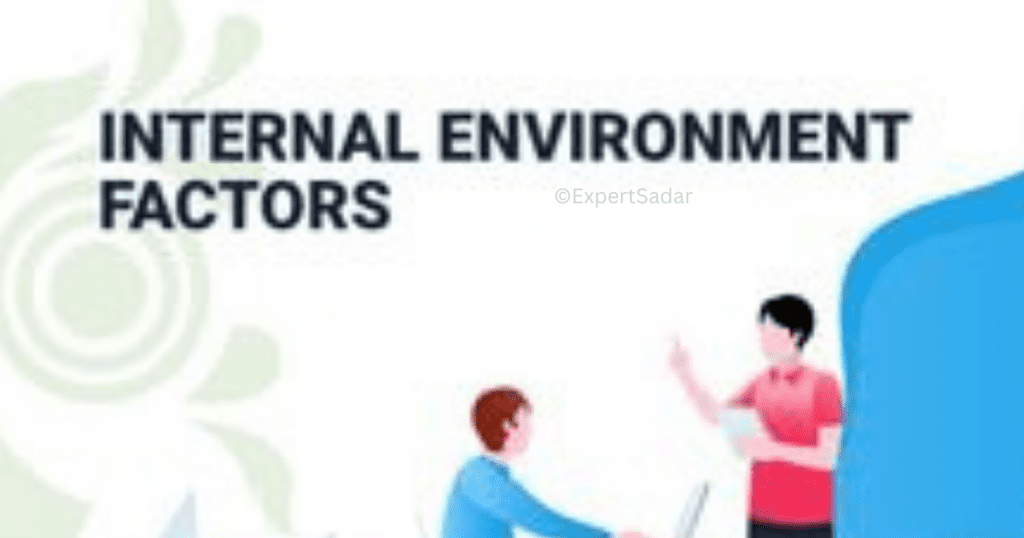Environmental factors can be defined as identifiable elements of cultural, economic, demographic, physical, technological, or political conditions that affect the growth, performance, and survival of an organization. Environmental factors can be both internal and external to the company. External factors may include economic and technological factors, while internal factors may include a company’s value system, goals, or internal relationships.
External Environmental factors
Unfortunately, there is not much you can do about these external environmental factors. But it’s important to monitor them so you can make changes to your business to minimize the impact. This can include natural changes and weather conditions throughout the world. It’s also important to keep an eye on new legislation that has been passed, because it means your business will have to rethink how it operates.
internal environmental factors
These are things you can change. It is directly related to your business and how it operates. Effectively managing your internal environment can greatly benefit your company. This is why many companies choose to follow the ISO 14001 certification path.
Key words in external analysis
1.To begin the discussion about external analysis, we need to define two terms.
2.An industry is a group of companies offering similar products or services. Examples of industries are soft drinks, mobile phones and sportswear.
3.Market segments are certain customers of the market that may differ from each other based on individual characteristics and special needs. Market segments can be segmented by attributes such as geography, demographics, and behavior.
External environmental factors

1-Technological factors
As technology evolves, companies can benefit from these developments or face challenges to compete with them. For example, a company that manufactures GPS devices for personal cars may experience declines due to GPS integration in mobile devices, but will overcome these challenges by developing new products. Other companies, such as healthcare providers, can use modern methods to collect data from their patients, maintain patient records, and improve patient care.
2-Economic factors
In terms of the economy, “navigating a world that is simultaneously consolidated and fragmented is the strategic challenge of the next decade.” Stock markets have hit new highs and economic volatility has fallen to historic lows, while political instability coexists with seemingly conflicting realities on an unprecedented scale. Overall, two-thirds of 25 households had high and/or low incomes between 2005 and 2014, according to the Globalization Economic Data. In addition, the United Kingdom and the United States also saw wage declines. In these countries, wealth is declining and income equality is increasing. Other trends affecting global, regional, and local economies are discussed in this and the next chapter.
3-Government and political forces
Governmental and political forces influence enterprises and organizations. Recent events that have shaken the global economy, and it is too early to predict their long-term effects, include the UK’s exit from the European Union, the war in the Middle East, free trade demands and restrictive policies, and health reform. . . . . and immigration, all of which increase business uncertainty by creating opportunity for some sectors and uncertainty for others.
4-Social factors
Where people live, their personal values and their social and economic circumstances affect what, where and why people go. Companies take social factors into account when producing and marketing products and many use current events, activities and social issues to attract customers. For example, companies that support women’s organizations can gain the trust and loyalty of consumers who identify as women. Addressing the unique preferences and expectations of underrepresented groups, who have more influence in the marketplace today than in years past, can lead to customer satisfaction and business growth.
5-Natural factors
With increasing environmental awareness, many consumers are becoming aware of the impact of their business activities on the planet. Some customers used their purchases to support companies that engaged in environmentally friendly practices. By addressing these external challenges and transforming their operations, companies can make a difference to protect the environment, retain customers and increase profits.
internal environment factors.

The inner world of the company is one of the most valuable things you can experience as an HR manager. To better understand this concept, it is useful to examine some of its sections.
1-Culture
Corporate culture reflects the value system of the organization. Culture defines people’s values, how they want things to work, morals, and how they are expected to behave. Culture is reflected in the company’s human resources policies and practices. For example, Dofasco, one of the world’s largest steel producers, has a slogan: “Our wealth is steel, our strength is people.” Although no two organizational cultures are the same, each organizational culture has a significant impact on HR practices and performance because HR practices reflect and define organizational culture. In other words, the HR activities chosen to implement come from a list of options defined by the organization’s prevailing organizational culture.
2-Technology
Moreover, technology within an organization is part of the internal environment (note that technology and competitors in the industry as a whole are part of the external environment). Technology is generally the tools and skills used to produce goods and services and varies from industry to industry. The dominant technology in the automotive industry is the assembly line, and educational technology for college and university students is known for integrating online tutorials, videos, assessments, and assignments. For example, assembly line technology clearly influenced the labor process and the type of workers hired and trained to make the car. As education depends on the quality of teaching and technology becomes increasingly intertwined with education, the focus on faculty selection, supervision, and training will change dramatically.
3-Value system
A company’s value system influences the company’s goals, standards, and ethical beliefs to some extent among its employees. Creating and maintaining a clear set of values creates organizational harmony and loyalty and shows employees what their employer stands for. In many cases, employees may consider the company’s unique value system when making important decisions. For example, if they share value with their employer, they may stay with the company longer. A few examples of shared value often define a company’s value system:
- Strong work ethic
- Be honest
- Self-esteem
- Respect others
- Be honest
- Servant Leader
- Be honest
4-Human resources
Human resources are also an important asset for any company that employs people. Organizations can achieve many internal goals through the efforts of HR personnel. For example, you can recruit, hire, interview, and hire highly qualified professionals who are essential to the success of any company.
5-Organisational structure
The organizational structure of the company determines the rules governing the communication process of the company. As part of this important internal work, companies define the roles and responsibilities of their employees. Companies can choose to implement several types of organization, including corporate or matrix organizational structures.
Blog By:- ExpertSadar



